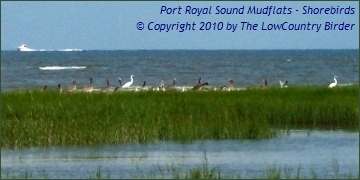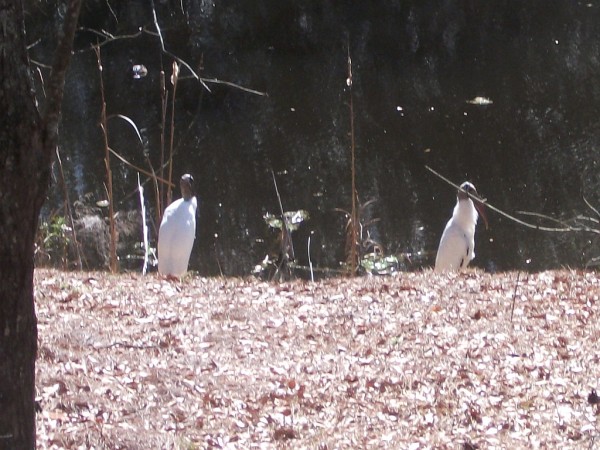Wood Storks in My Backyard
I saw a recent article in a Charleston newspaper proclaiming: “Wood Storks Stage Comeback.” Apparently there are now over 150 breeding pairs in the Dungannon Plantation Heritage Preserve about 10 miles south of Charleston. Now there are 40 pairs of Wood Storks that have established what may be the largest urban breeding colony in the region in Dill Sanctuary, on the Stono River on James Island, five miles from downtown Charleston. Here’s a snippet from the article (which is no longer available online):
Incongruously, up close on the ground, the stork’s wrinkly head might be uglier than the macabre vulture it’s related to.
“It’s not a handsome bird,” said Andy Harrison, a member of Charleston Audubon.
Like the bald eagle, the stork has become a bellwether of the potential of preserving coastal environment as the Lowcountry develops. Its success gives conservationists hope for the return of fabled wildlife such as the whooping crane lost more than a century ago.
A generation ago, the stork bird had all but disappeared. An estimated 40,000 breeding pairs in the Southeast in 1930 were decimated by the loss of their nesting habitat and shallow feeding waters. In 1981, only 11 pairs were counted in South Carolina.
But recent counts put the number of wood stork pairs in the state at more than 2,000, the largest colony in the United States.
I feel fortunate to have had several of these magnificent (but admittedly UGLY!) birds visit our back yard over the past year. Here is a picture I took from my office window of two of them that were having some “quality time” on the bank of the lagoon behind our house:
You can also view a video that I shot of three Wood Storks feeding along the far bank of our lagoon.
What do you think – are these huge birds making a big comeback? Is anyone else seeing them in increased numbers in your area? I know that I often see them along the tidal pools near the first bridge going over to Hilton Head Island, along with lots of White Ibises and various egrets.
Tags: birding, birdwatching, endangered species, lowcountry birder, nature, nimby, wood storks


